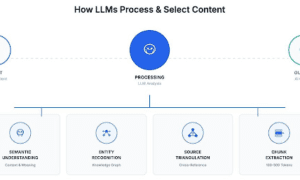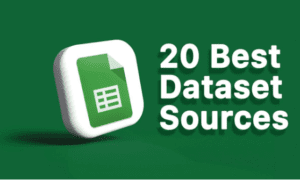High-yield savings accounts are an increasingly popular way to house emergency funds and rainy-day cash. These secure money holdings provide the benefit of easy access to your money along with interest to help you grow your savings risk-free.
Although savings accounts can be a part of your financial portfolio, they aren’t designed to be long-term retirement funds or high-growth investments. If your financial situation is strong enough that you don’t need to access those extra dollars, such as those in higher-paying careers like doctors, you may be better off placing them in a Roth IRA, 401(k), or other investment. This article by OJM Group offers more information on the most effective methods for physicians and other high-salary earners to use for financial planning.
But if you know you might need to use the money if something important arises, a high-yield savings account is a great choice. However, not all of these accounts will maximize your earnings. Let’s look at the various types of high-yield savings and explain what to look for before you choose the one that will house your nest egg.
1. Savings Versus High-Yield Savings
First, knowing that a traditional savings account isn’t precisely the same as a high-yield one is vital. Savings accounts are where you store your excess money that doesn’t need to be used in the short term but should be readily accessible.
Savings accounts frequently limit how many withdrawals you can make, charging a fee for transactions above that limit. If you need to use the money in your savings, it’s better to place it in your checking account, where transactions are unlimited.
High-yield savings accounts function like your average savings but offer higher APYs. A percentage point difference can be significant if you deposit large sums of money into the account.
2. What to Watch For When Choosing a High-Yield Account
Maybe you love your bank, and you’ve been loyal to it for years, or you see a deal where you can get cash back for opening a high-yield savings account. Remember, whatever terms you sign up for now will impact your finances for years. Shop around and look for high-yield savings accounts that are optimal for your intentions and include your preferred banking methods.
Each bank and credit union has unique terms, which can change throughout the year. The best high-yield accounts have impressive rates, but that’s just one way you’ll know you’ve chosen a solid place to store your money. Other variables include:
- Banking styles: Are you a predominantly online banker who prefers to control your finances electronically, or do you enjoy the freedom and personalization of one-on-one in-person interactions at the bank?
- Competitive offers: Your growth will be determined by your account’s annual percentage yield (APY). APY is not the same as an interest rate. APYs refer to the full picture of your savings over one year using compound interest, while interest can be compounded daily, monthly, and quarterly. Some of the best high-yield savings accounts offer a 4-5% APY.
- Funding institutions: If you don’t mind where your account is housed, the top offers usually come from credit unions and online banks. These institutions have lower overhead than traditional banks. But choosing small banks and credit unions is ideal for those who prefer a regional, personalized consumer experience.
Shopping by APY only changes, too. Your financial advisor can help you decide if now is the best time to invest or if waiting a month or two might give you an edge on better APY rates.
3. Yes, FDIC-Insured Matters
With a recent history of bank collapses making headlines, we’ve seen first-hand the importance of placing your money in the stores of a Federal Deposit Insurance Corp. banking institution. This government agency protects consumer deposits should a bank collapse or fail.
Most FDIC coverage is limited to $250,000 per bank, per customer. The fine print also states that this is per ownership category, breaking down coverage to include different account types.
Online and non-bank fintechs may not be FDIC-insured. If they are, find out the “parent” name, and be cautious of holding more than $250,000 total in your accounts under the same parent. For example, in the Silicon Valley crash, depositors with high-yield savings accounts in a traditional account held by one of the covered institutions and an online bank under a different name but owned by that parent company would be limited to $250,000 for both accounts.
Conclusion
Finding the ideal high-yield savings account for your nest egg takes shopping around and comparison. Look for institutions that offer banking in your preferred style (online, in-person, or a hybrid), that include competitive APYs, and are FDIC-insured, and you’re on the right track to maximizing your savings.































